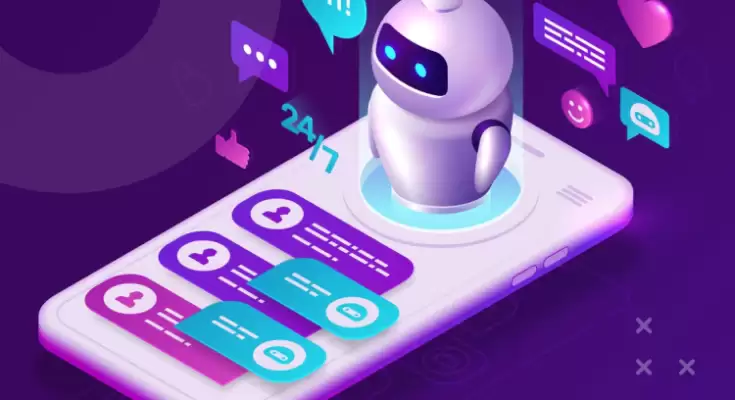Telehealth technology is growing in popularity, and the healthcare industry is seeking ways to improve telehealth service delivery. Healthcare practitioners can enhance patient outcomes, accelerate administrative processes, and uncover the future by integrating Artificial Intelligence (AI) with telehealth software.
Artificial intelligence in the healthcare sector is changing the industry, but it is also essential to understand how it is being used and its limitations. Here are different ways of the healthcare system that is utilizing AI technology:
A study by MIT found that 75% of healthcare facilities using AI stated it increased their ability to treat patients’ illnesses, and 4/5 said it prevented staff burnout. AI in telehealth is a strong choice for the future of medical delivery because COVID-19 is putting pressure on both sectors (quantity of clinical data and linked patients, as well as increased practitioner work). In this essay, we’ll talk about how AI is changing the telehealth industry.
How is AI revolutionizing the telehealth industry?
HEALTH INFORMATION TECHNOLOGY
Health Information Technology (HIT) provides systems to store and manage data, including Electronic Health Record (EHR) and Electronic Medical Records (EMR) solutions. To implement this technology, AI algorithms will usually be used to retrieve medical data about conditions and treatments.
REMOTE PATIENT SUPERVISION
A telehealth technology called remote patient monitoring uses wearable sensors to keep tabs on a patient’s health outside a doctor’s office. These sensors can monitor vital indicators, sleep patterns, and activity levels. Artificial intelligence and machine learning can be used by remote monitoring devices to control chronic illnesses and quickly notify medical experts of any significant changes.
DIAGNOSIS SUPPORT
Leveraging the power of AI, healthcare providers can enhance diagnostic accuracy and speed. AI algorithms excel at analyzing vast amounts of data, enabling the recognition of patterns in medical images that may elude human observation. By harnessing AI technology, medical professionals can provide more precise diagnoses, ultimately improving patient health outcomes.
The advantages of AI in Telehealth
PERFORMING TASKS THAT SAVE TIME
Medical professionals can prioritize time spent with patients diagnosing illnesses and presenting treatment strategies when they no longer undertake simple but time-consuming administrative labor. These procedures can be automated with AI and natural language processing algorithms, reducing the burden of administrative work on medical personnel.
STRENGTHEN ACCESS TO HEALTHCARE
Patients having difficulty accessing healthcare, such as those living in remote areas or without access to transportation, can get treatment through a virtual care platform. Telemedicine companies use artificial intelligence to give virtual appointments, medication management, and mental health services to patients.
RELIEVING STRESS ON MEDICAL TRAFFIC
Medical personnel work long hours in a fast-paced setting. Minor jobs can be automated with AI’s assistance, and diagnosis research can be effectively completed. With the use of time-saving tools and research aids, medical practitioners can work less stressfully.
Challenges to Face of AI in Telehealth:
Of course, we can see AI’s potential in healthcare and the benefits that experience both patients and providers, but it’s crucial to consider the challenges that come with it.
POTENTIAL FOR INACCURACIES
To get successful AI in a healthcare setting, it is crucial to rely on the available data from authentic cases and diagnoses. When the system attempts to operate patient data analysis to diagnose a condition, there is an increased number of misdiagnoses. They are not able to analyze the patient data that is related to the current case, it impacts different medications and treatment plans.
OVERLOOKING SOCIAL VARIABLES
Different treatment plans are built around patients’ wants and resources. Despite the ability of AI systems to develop treatment plans, they may not take into account society’s and the economy’s needs when making treatment decisions. As the patient’s care depends on more than the textbook treatment plan, AI could be limited in this case.
SECURITY RISKS
Any software raises security issues, but the healthcare industry is particularly vulnerable since HIPAA compliance rules must be followed to safeguard patient health information. Because AI systems are frequently dependent on data networks, they are subject to security risks. Healthcare organizations run a higher risk of becoming a cyberattack target because they handle a lot of sensitive data.
The growing role of AI in Telehealth software:
AI has become a commonplace reality along with technological advances. Healthcare is one of the main sectors that is quickly changing on a very large scale. The telehealth sector uses AI extensively, from issuing electronic health records to offering personal counseling. So when it comes to
Through this blog, you can learn how AI is transforming the landscape of telehealth software solutions:
- Offers more accurate judgments
- Saving doctors from burning out
- Offering better medical care to patients
- Making Hospital visits convenient
How AI is managing the future of Healthcare?
The integration of artificial intelligence (AI) in telemedicine has the potential to transform healthcare delivery. Telehealth software development companies in Edinburgh and beyond are leveraging AI to enhance patient care and accessibility.
Huge volumes of patient data may be analyzed by AI algorithms, increasing the precision of diagnoses and allowing for remote monitoring. Another area in which AI shines is the interpretation of medical pictures, helping radiologists identify anomalies and take quick, well-informed conclusions.
AI-powered virtual assistants interact with patients, collect medical history, and offer preliminary assessments, facilitating personalized healthcare. Collaboration between telehealth software developers and healthcare providers ensures secure and robust AI-driven telemedicine platforms.
Conclusion:
Telehealth software that integrates AI is revolutionizing healthcare delivery. AI algorithms analyze patient data, improving diagnosis accuracy and enabling remote monitoring. AI-powered virtual assistants enhance patient care and accessibility. Challenges such as potential inaccuracies and security risks must be addressed. Healthcare providers and software developers should work together to develop telehealth software. Telehealth software development companies are becoming increasingly important as healthcare management evolves. With AI integrated into telehealth, more efficient and personalized care can be provided.











